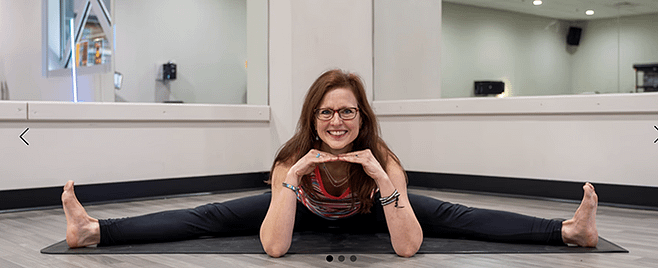Financial Advantage w/ Douglas Marion – 4 Financial Tips of the Week – January 10, 2026
- The Financial Advantage
In my article last week I suggested a couple of simple practices to help bring your attention into the present moment: 5-4-3-2-1 senses game, which helps you notice your surroundings, and the Spy Happiness Game, which helps you refocus on the positive aspects of any given situation. While both are effective tools for disengaging the brain from negative or numb emotions, they alone won’t reboot your inner spark—what we’re calling Joy in this series.
Meet Jocylyn.
Jocylyn is a successful marketing professional and avid marathon runner. She’s smart, well-connected, accomplished, and married to a perfectly fine human being. While she experiences happiness, she doesn’t feel joy. Despite the Land Rover, the beautiful home on Lake Norman, and all the traditional signs of success, a persistent sense of numbness lingers.
She knows she has a great life, but Jocylyn feels empty inside.
Can you or someone you know relate?
Happiness v Joy:
Both are similar feel-good states, but happiness is more conditional. Happiness results from something going your way that results in short feelings of intense positive energy – e.g., getting a compliment, your child getting into a college of choice, buying something on sale, procuring something of status, winning the bid on a house you want, etc. Once the novelty fades, you return to your baseline state.
Joy is a state of being: Not as dependent on individual circumstances being “just right.” Joy unlocks resilience and endures through ups and downs.
| Aspect | Joy | Happiness |
| Definition | A profound, enduring feeling rooted in inner peace and contentment. | A transient emotional state resulting from external circumstances or achievements. |
| Source | Internal; arises from personal values, relationships, and spiritual well-being. | External; triggered by events, accomplishments, or sensory pleasures. |
| Duration | Long-lasting; can persist despite challenges or adversity. | Short-lived; often fluctuates with changing situations. |
| Emotional Depth | Deep and fulfilling; often associated with meaning and purpose. | Surface-level; linked to momentary satisfaction or pleasure. |
| Relation to Others | Often connected to altruism, love, and deep interpersonal connections. | Can be influenced by social comparisons and external validation. |
| Stability | Stable; less susceptible to external fluctuations. | Variable; can change rapidly with circumstances. |
| Pursuit | Often a byproduct of living authentically and embracing life’s journey. | Frequently pursued through goal attainment and pleasure-seeking behaviors. |
Sources: Psychology Today and Research Gate
Take this short quiz to better understand the extent of Joy in your life.
🌟Joy: Self-Assessment Quiz
Instructions:
Rate how often each of the following statements is true for you using this scale:
1=Not at all
2=Almost Never
3=Mostly Not
4=Neutral
5=Frequently
6=Most of the Time
7=All of the Time
Addressing each statement rated less than 5 will increase your ability to live in Joy.
“What can I do or change so this statement becomes truer for me?”

For example, Jocylyn rated Statement #1 a “4.” While she liked the identity of being a marathon runner, she didn’t actually enjoy the intense training. She asked herself why she was running: Was it for her own satisfaction or to impress others? Upon reflection, she realized she loved running 7 miles—that’s when she felt most alive. So, she adjusted her long-run day to top out at 7 miles, reclaiming joy in her movement.
Jocylyn rated Statement #17 a “2.” To celebrate even small wins, she started keeping a notebook by her bed and spent 1-2 minutes writing down one thing that went well each day. On tough days when writing felt like too much, she spoke her win aloud.
TIP: The act of writing doubly reinforces the positive (aspect of the) experience in the brain. Writing helps commit the win to memory. Writing provides an uplifting reference to review when days are particularly tough / numbing. Recalling accomplishments reminds the brain to look for and find “wins,” thus increasing the ability to live in Joy.
If Question 10 describes you, you can change your perspective. Try these suggestions.
TIP: Focusing on the positive tells your brain it matters. Over time, your brain will develop pathways to notice positive moments, making joy easier to access.
If you resonate with Question 14, there is hope.
HINT: If she started to judge her drawing abilities, she put it down for the night or she told herself drawing is just for fun: what mattered was the process not the outcome. Jocylyn found it helped her unwind and she slept better. Over time, she also started to draw better which increased her enjoyment of the activity.
While Jocylyn hadn’t found joy yet*, she is beginning to feel less numb. She’s using this quiz as a springboard, taking one small step at a time.
*TIP: Small word insertions like “yet” communicate to your brain that it will happen. It invites hope and perseverance.
To Be Continued…..
The information in this column only scratches the surface of root causes and solutions. The tips are not intended to be comprehensive, but to provide quick tidbits that help identify:
Working with a yoga therapist, psychologist, or coach can give you the tools—and the accountability—to keep the spark alive and glowing.
The Yoga Therapy Approach – In yoga therapy, it is believed that you innately know the answer to why you don’t live in joy, but you aren’t readily able to access the answer because of life’s conditioning. A yoga therapist helps you reconnect with that part of you that’s hidden or misplaced to enjoy the life you yearn to live.


Debbey Woodruff – Your WellBEing Guide – is a certified yoga teacher and mindfulness practitioner. Through yoga therapy, mindful movement, breathwork, and guided self-reflection, Debbey helps you reconnect with your body, calm your mind, and nurture lasting emotional well-being. Experience a compassionate, personalized path to healing and renewal and find your W.O.W. – Whole-body Optimized WellBEing ©. Debbey is the owner of Breakthrough! WellBEing Phone: 704-881-4912 and email: info@breakthroughwellbeing.com


CONNECT WITH DEBBEY’S OTHER ARTICLES



